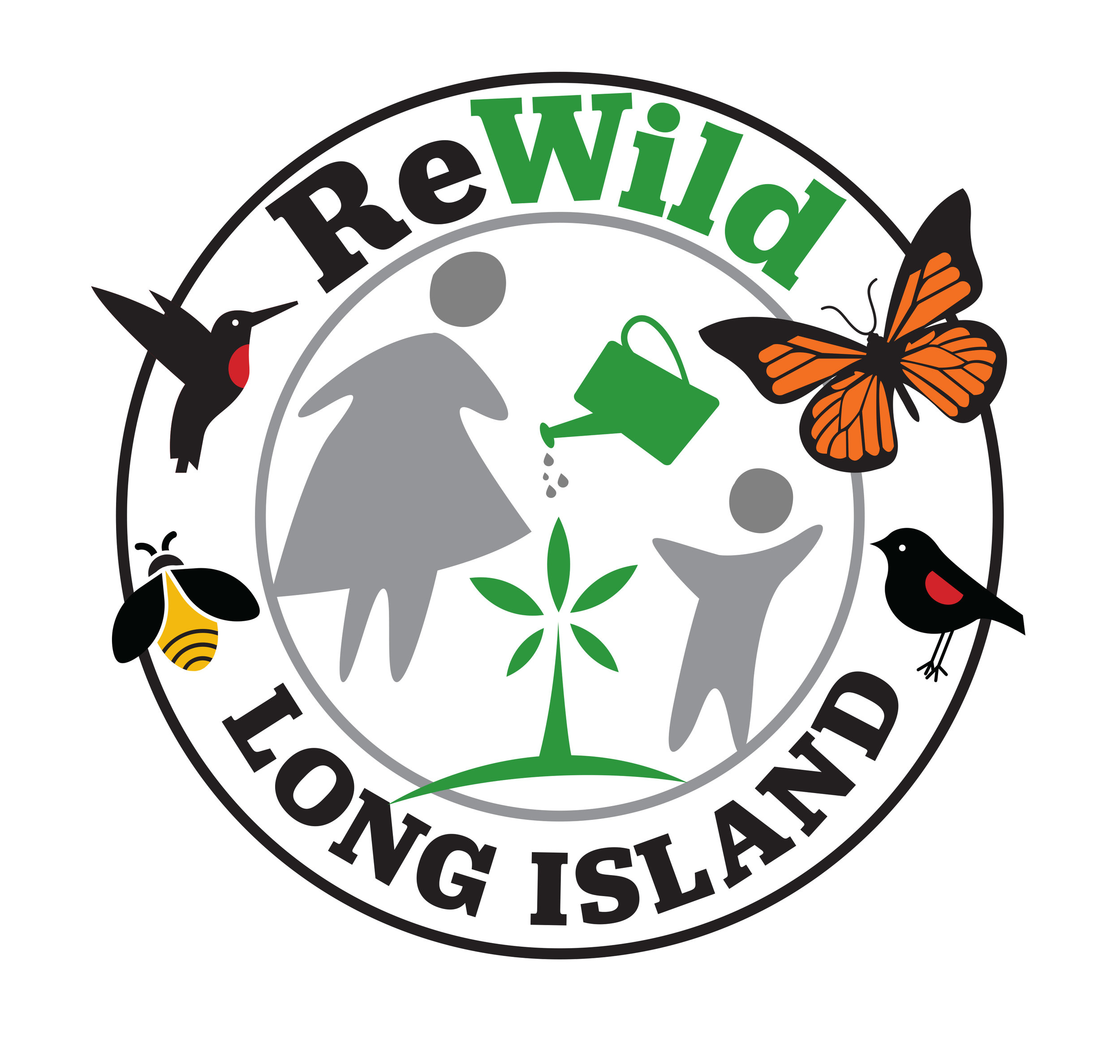Look for the sticker!
native plants are key to rewilding.
It’s easy to identify native plantS when you see our label at your local retailer!
The Native to Long Island labeling program helps gardeners and retailers choose beautiful, native plants that support local birds, butterflies, and a healthier environment for everyone.
A Community for Everyone
New to gardening or a seasoned pro? Join us to promote awareness of native plants. Together, we’re making Long Island greener, more beautiful, and healthier!
Home Gardeners: Confidently choose native plants for your garden.
Retailers: Sell more native plants
Volunteers: Help retailers and consumers get more native plants in the ground!
For Home Gardeners: Why Choose Native Plants?
Native plants are perfect for our gardens:
Seasonal Beauty: From spring blooms to colorful fall foliage, native plants add year-round interest to your garden.
Reduced Maintenance: Native plants are adapted to Long Island’s soils and climate. This means they need less water, less work, and no chemical fertilizers.
Eco-Friendly Landscaping: Native plants have deep roots that help stop erosion, improve soil, and filter rainwater. They also reduce runoff, which means cleaner streams, ponds, and beaches for all of us to enjoy.
Support Local Wildlife: Native plants and Long Island’s butterflies, bees, and birds have evolved together over thousands of years. These plants give pollinators the food and shelter they need, and in return, pollinators help our gardens flourish. Native bumblebees pollinate many of our food crops, including tomatoes and blueberries.
For retailers: ReWild can help you and your staff support native plant sales!
The Native to Long Island program is designed to help you thrive while promoting sustainable gardening and providing the native plants that customers are increasingly looking for:
Plant Labeling: We’ll visit your shop, identify native species in your inventory, and label them with eye-catching "Native to Long Island" stickers—making it easy for customers to identify eco-friendly options.
Promotion: We’ll include your shop in our list of pollinator-friendly nurseries, which will be promoted on a range of platforms, from social media and newsletters to local tabling events.
Staff Education: Our team can explain the benefits of native plants to your staff so they can confidently assist your customers and boost sales.
Customer Engagement: We can host a pop-up information table at your shop to share resources with customers and answer their questions about native gardening.
for interested individuals: How Can I help?
Our Native to Long Island label assures customers that a plant is truly native to Long Island so they can add more natives to their gardens with confidence. Would you like to help us add labels or educate others on the benefits of native plants? We will train and support you. If you are interested, please follow the link and fill out the form, or email us at NativeLabel-Leads@ReWildlongIsland.org
Environmental Benefits of Native Plants
Native plants aren’t just pretty—they’re eco-heroes in disguise!
Conserve Water: Adapted to local rainfall patterns, native plants require less irrigation than exotic species.
Healthier Gardens: Native plants thrive in local soil & sun conditions, and provide the foundation for a healthy, balanced environment in your yard
Combat Climate Change: Many native species sequester carbon dioxide while improving air quality.
Preserve Biodiversity: By including a range of native plants in your garden, you help restore habitats for pollinators, birds, and other wildlife that depend on them for survival
WHERE CAN I FIND A PARTICIPATING Retailer?
If your local retailer isn’t on the list yet, recommend them by filling out this form:
Our List of Native Plants and Why We Care
Want to know if the plant you’re looking to buy is native to Long Island? Take a look at the list!
We rely on the New York Flora Association’s data to determine if a plant is native on Long Island. The NYFA is dedicated to field botany and furthering the understanding of plants that grow wild in New York State.
Native vs. Cultivar: What’s the Difference?
If you’re planning a garden that’s good for local wildlife and the environment, knowing the difference between native plants and cultivars is a great place to start!
What Are Native Plants?
Native plants are nature’s originals—species that have grown in a specific ecosystem for centuries without human interference. They’ve evolved alongside local wildlife, making them a perfect match for supporting pollinators, birds, and other creatures.
Native plants thrive in local soils and climate. That means they need less water, no fertilizers, and very little maintenance—making them an eco-friendly, low-effort choice for your garden.
What Are Cultivars (or “Nativars”)?
Cultivars are plants that humans have bred or selected for certain traits, such as unique flower colors, shapes, or sizes. While some cultivars are based on native species, they don’t always offer the same benefits to wildlife.
For example, changes in flower structure or leaf color can make cultivars less appealing—or even unusable—as food or habitat for pollinators and animals. You can usually spot a cultivar on a grower’s tag by its fancy marketing name in quotes, such as Echinacea purpurea ‘PowWow Wild Berry.’
Why Does It Matter?
In the Native to Long Island program, we exclusively label true native species. As gardeners are rewilding their yards it is useful to know what portion of new plantings is truly native. These plants provide the greatest ecological benefits by:
Supporting pollinators like bees and butterflies that rely on specific native plants for food and reproduction.
Offering critical habitat for birds and other wildlife.
Contributing to a balanced ecosystem by thriving without the need for soil amendments, pesticides or fertilizers.
By choosing true natives for your garden, you’re creating a beautiful space and making a meaningful impact on the health of Long Island’s environment. Look for our "Native to Long Island" labels at participating retailers to ensure your choices are beneficial to our local ecosystem.
For More Information
email us at NativeLabel-Leads@ReWildlongIsland.org









